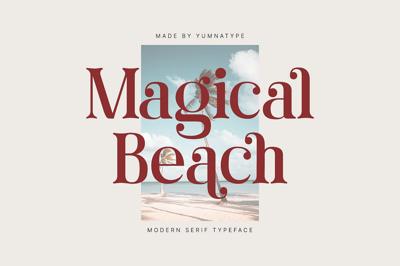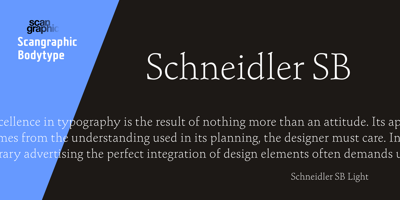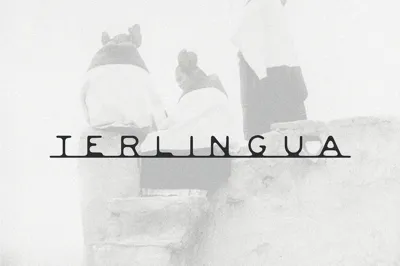Font Guide for Print Materials
Font Guide for Print Materials
Print typography operates by different rules than digital design. What looks perfect on screen can fail miserably on paper. Understanding these differences ensures your printed materials look professional and communicate effectively. Here's your comprehensive guide to choosing and using fonts for print.
Why Print Typography is Different
Resolution Matters
Print offers much higher resolution than screens—typically 300 DPI or more versus screens at 72-96 PPI. This means subtle details invisible on screen become prominent in print. Delicate serifs and fine lines that disappear digitally work beautifully on paper.
Fixed Size Considerations
Unlike websites where users can zoom, printed materials have fixed sizes. A business card reader can't enlarge tiny text. Your font choices must work at their final printed size without adjustment.
Reading Distance Varies
Business cards are held close, posters are viewed from far away. Font selection must account for intended viewing distance. What works for a brochure won't work for a billboard.
No Backlight
Printed materials rely on reflected light, not emitted light. This affects readability and contrast requirements. Colors and contrast that work on screens may not translate to paper.
Best Fonts for Different Print Materials
Business Cards
Business cards demand excellent legibility at small sizes. Space is extremely limited, so every character counts.
Recommended fonts:
- Helvetica - Clean and professional
- Garamond - Classic and refined
- Futura - Modern and geometric
- Bodoni - Elegant with high contrast
- Gill Sans - Humanist and approachable
Font sizes:
- Name: 14-18pt
- Title: 10-12pt
- Contact info: 8-10pt
Tips: Avoid script fonts for contact information. Keep it simple and scannable.
Brochures and Flyers
Brochures balance headlines, body text, and visual elements. Typography needs to guide readers through content hierarchy.
Headline fonts:
- Bebas Neue - Bold and attention-grabbing
- Playfair Display - Sophisticated serif
- Montserrat - Modern and clean
- Rockwell - Strong slab serif
- Trade Gothic - Industrial and confident
Body text fonts:
- Caslon - Traditional and readable
- Georgia - Friendly serif
- Minion Pro - Professional publishing standard
- Palatino - Elegant and clear
- Myriad Pro - Clean sans-serif
Font sizes:
- Headlines: 18-36pt
- Subheadings: 14-18pt
- Body text: 10-12pt
Posters and Banners
Distance viewing requires bold, high-contrast fonts that remain legible from far away.
Recommended fonts:
- Impact - Maximum readability at distance
- Cooper Black - Friendly and bold
- Knockout - Condensed and powerful
- Avenir - Geometric clarity
- Futura Bold - Strong and modern
Font sizes: Calculate based on viewing distance. General rule: 1 inch of letter height per 10 feet of viewing distance.
Tips: Avoid thin strokes and intricate details. Bold, simple letterforms work best.
Books and Magazines
Extended reading requires comfortable, highly readable serif fonts that reduce eye fatigue.
Best choices:
- Baskerville - Classic book font
- Adobe Garamond - Timeless elegance
- Bembo - Renaissance tradition
- Sabon - Versatile and readable
- Minion - Modern classic
Font sizes:
- Body text: 10-12pt
- Footnotes: 8-9pt
- Headlines: 18-24pt
Tips: Line spacing (leading) should be 120-145% of font size. Justified text works well for books but requires careful attention to hyphenation.
Packaging
Packaging fonts must work across various materials, angles, and lighting conditions while reflecting brand personality.
Recommended fonts:
- DIN - Industrial and reliable
- Proxima Nova - Modern and friendly
- Gotham - Contemporary authority
- Brandon Grotesque - Geometric warmth
- Neutraface - Art Deco elegance
Tips: Consider how fonts look on curved surfaces, transparent materials, and different textures. Test actual mockups before final printing.
Invitations and Formal Materials
Elegance and sophistication require refined typography that conveys importance and occasion.
Recommended fonts:
- Didot - Extremely elegant serif
- Bodoni - High contrast sophistication
- Trajan - Classical authority
- Copperplate - Formal and traditional
- Edwardian Script - Refined script (use sparingly)
Tips: White space is your friend. Don't crowd elegant typography—let it breathe.
Technical Considerations for Print
Choose the Right Format
Use vector fonts or outline your text before sending to print. This prevents font substitution issues and ensures your typography looks exactly as intended.
Key formats:
- PDF with embedded fonts
- Adobe Illustrator files with outlined text
- High-resolution vector files
Mind Your Color Space
Digital designs use RGB (Red, Green, Blue). Print uses CMYK (Cyan, Magenta, Yellow, Black). Convert files to CMYK before printing to avoid color shifts.
Black text should use 100% K (black) only, not a CMYK mix, for crisp edges.
Understand Bleed and Safe Areas
Text should stay within safe margins (typically 0.125-0.25 inches from trim edges). Important text too close to edges risks being cut off.
Resolution Requirements
Set text in vector format when possible. If rasterizing text, use minimum 300 DPI at final print size. Lower resolution results in jagged, unprofessional edges.
Font Pairing for Print
Classic Combinations
Garamond + Helvetica
Timeless pairing used in countless books and magazines. The serif-sans contrast creates clear hierarchy.
Bodoni + Futura
Both geometric fonts that share similar structure but differ in style. Creates sophisticated, modern aesthetic.
Baskerville + Gill Sans
British classics that pair beautifully. Professional without being cold.
Modern Combinations
Didot + Proxima Nova
High fashion meets contemporary. Perfect for upscale brands.
Rockwell + Avenir
Bold slab serif with clean geometric sans. Great for corporate materials.
Print-Specific Typography Rules
Serif Fonts for Long Text
Serifs guide the eye along lines of text, making extended reading more comfortable. For anything over a paragraph, serif fonts generally outperform sans-serifs in print.
Larger Leading for Print
Line spacing should be more generous in print than screen. Aim for 120-145% of your font size. For 12pt type, use 14-17pt leading.
Watch Your Tracking
Letter spacing (tracking) affects readability significantly in print. Too tight creates illegibility, too loose looks amateurish. Most fonts are designed with optimal spacing, so adjust minimally.
Proper Hyphenation and Justification
For justified text, enable proper hyphenation to prevent awkward word spacing. But don't over-hyphenate—consecutive hyphenated lines look messy.
Paper and Printing Method Considerations
Coated vs Uncoated Paper
Coated paper: Allows for finer details and smaller text. Colors appear more vibrant. Best for glossy magazines, high-end brochures.
Uncoated paper: Text can spread slightly. Use slightly larger font sizes and avoid extremely thin strokes. Better for business documents, letterheads.
Printing Methods
Offset printing: Handles fine details well. Professional results for large runs.
Digital printing: Good quality but can struggle with very small text. Test samples first.
Screen printing: Requires simple, bold fonts. Fine details don't reproduce well.
Letterpress: Thick strokes work best. Avoid fonts with very thin details.
Common Print Typography Mistakes
Using Screen-Optimized Fonts
Fonts designed for screens (like Georgia or Verdana) may not be optimal for high-resolution print. Choose fonts designed for print when possible.
Ignoring Kerning
Uneven spacing between letters becomes very obvious in print, especially at large sizes. Adjust kerning for display type.
Too Small for Comfort
Don't make readers squint. If you're unsure about size, go larger. Test print actual size to verify readability.
Overusing Font Styles
Bold, italic, underline, and ALL CAPS should be used sparingly. Over-emphasis dilutes impact and looks unprofessional.
Final Thoughts
Print typography is an art that rewards attention to detail. The permanence of print demands careful consideration—there's no update button after printing 10,000 brochures.
Test print your designs at actual size before committing to large runs. What looks perfect on your monitor might reveal problems on paper. Invest in proof prints and examine them carefully in good lighting.
Great print typography feels effortless to readers. They focus on your message, not struggling to read it. That's the hallmark of professional design—typography that serves content without calling attention to itself.
Master these principles, and your printed materials will stand apart from amateur competition, building credibility and communicating with clarity and style.




